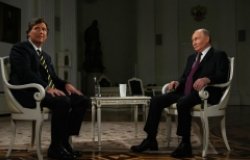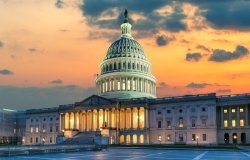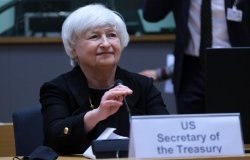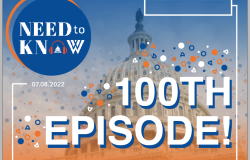Greenberg on Spin: A Historical Look at Presidential Persuasion
Wilson Center Fellow David Greenberg looks at how U.S. presidents have used "spin" in different ways over the last century to sway public opinion and advance their agendas.

Politicians have always used what we now call "spin." They use it for self-promotion, to lure voters and to bolster public approval. But they also use it to rally the public around an issue, advance their agendas, and inspire their followers.
Wilson Center Fellow David Greenberg is writing a book on the evolution of spin, which he broadly defines as any apparatus of public persuasion. Looking primarily at U.S. presidents since the turn of the 20th century, he said Theodore Roosevelt and Woodrow Wilson were the first to heed public opinion and use spin to advance their agendas.
When Roosevelt took office in 1901, he had no speech writer, press secretary, or media consultants, but he wanted to connect with the people. He coined the term "bully pulpit," referring to the White House as a good platform to bring important issues to the forefront. Roosevelt loved to sit in the barber's chair pontificating with reporters, said Greenberg. "Teddy Roosevelt wanted to drive the agenda by himself, and he changed our expectations of what the president should do."
The beginning of the 20th century ushered in a new era of publicity, characterized by mass circulation newspapers in which a more heterogeneous population was reading more, drawn to sensational journalism and big headlines. Greenberg said Theodore Roosevelt used the media actively to pursue his reformist agenda. Publicity meant transparency for Roosevelt, who contended the best way to remedy wrongdoing was to have more publicity in government and business.
Woodrow Wilson also used spin to strengthen his presidency. The first president officially to hold a press conference, Wilson often made his case before the public. Wilson argued that the president was the only figure elected by everyone and was therefore the voice of the people, said Greenberg.
The apparatus of spin grew over the years, as various presidents made contributions to it. Calvin Coolidge became the first president to use radio as a political tool, though Franklin Roosevelt later took radio to another level with his famous Fireside Chats. FDR was also the first president to consult pollsters and became master of the press conferences. Later, televised press conferences become a frequent tool, particularly by John Kennedy. Starting with Richard Nixon, presidents began scaling back on them and have done so more in recent years as media have become more fragmented.
Technological innovations play a big role in spin. With each new medium—radio, television, the Internet—came new ways to reach more people, though Americans have had mixed reactions to change. In the 1950s, for example, Dwight Eisenhower was the first to employ televised campaign ads. The 30-second spots were simple and innocent, said Greenberg, but at the time they were viewed as innovative, groundbreaking, even controversial.
Greenberg's book also will look at innovators in the development of spin. They include Edward Bernays, whose best public relations efforts failed to boost Herbert Hoover's popularity; Albert Lasker, an advertising mogul who helped get Warren Harding elected in 1920; and Clem Whitaker and Leone Baxter, the first professional political consulting team.
"Where does legitimate spin end and lying begin?" asked Greenberg. "It's hard to say. Politicians can often defend their assertions. In democracy, the business of spin and counter-spin is just part of the territory, and I think that's better than a monolithic truth imposed from above."
About the Author











